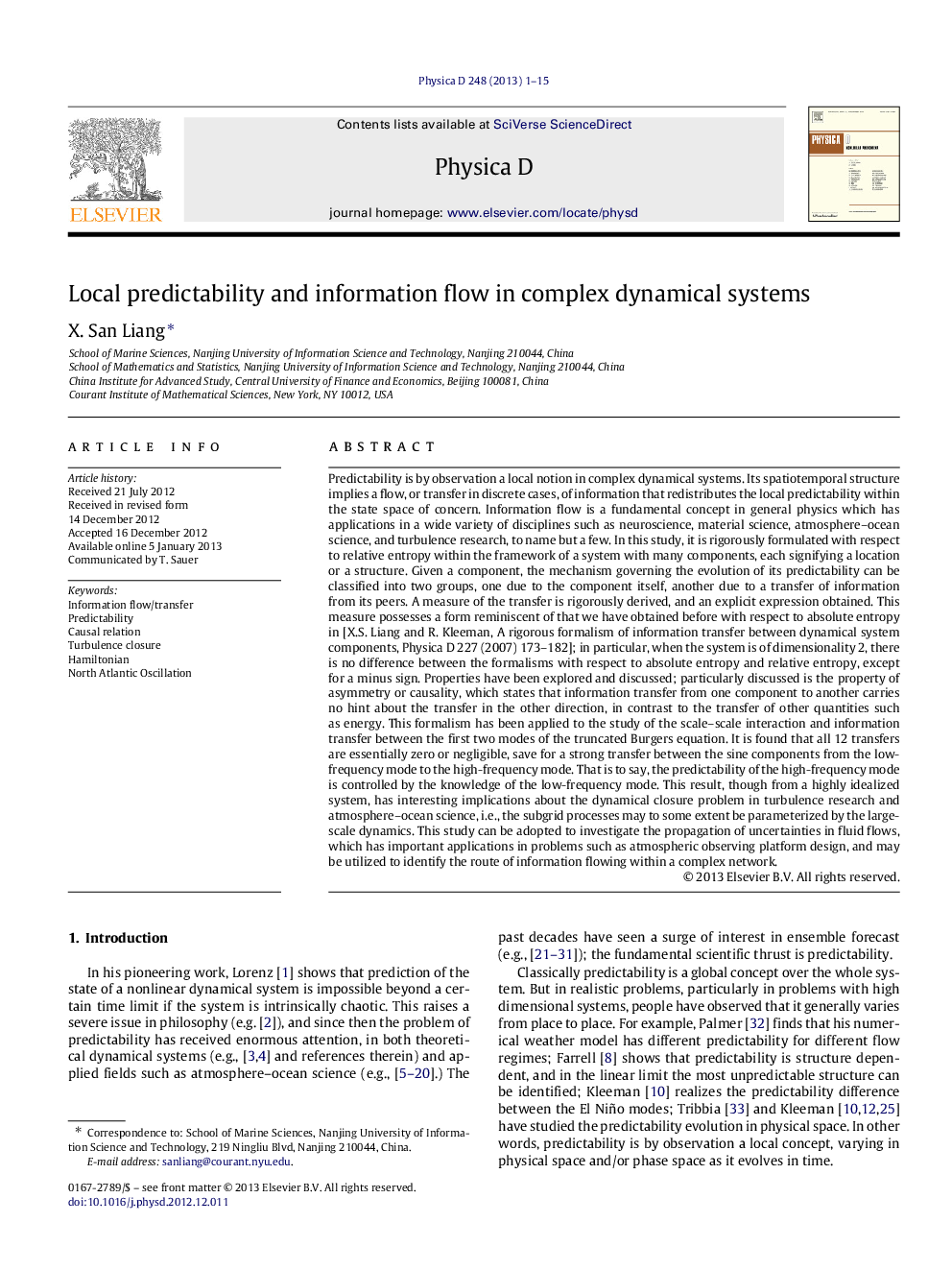| کد مقاله | کد نشریه | سال انتشار | مقاله انگلیسی | نسخه تمام متن |
|---|---|---|---|---|
| 1898488 | 1534055 | 2013 | 15 صفحه PDF | دانلود رایگان |

Predictability is by observation a local notion in complex dynamical systems. Its spatiotemporal structure implies a flow, or transfer in discrete cases, of information that redistributes the local predictability within the state space of concern. Information flow is a fundamental concept in general physics which has applications in a wide variety of disciplines such as neuroscience, material science, atmosphere–ocean science, and turbulence research, to name but a few. In this study, it is rigorously formulated with respect to relative entropy within the framework of a system with many components, each signifying a location or a structure. Given a component, the mechanism governing the evolution of its predictability can be classified into two groups, one due to the component itself, another due to a transfer of information from its peers. A measure of the transfer is rigorously derived, and an explicit expression obtained. This measure possesses a form reminiscent of that we have obtained before with respect to absolute entropy in [X.S. Liang and R. Kleeman, A rigorous formalism of information transfer between dynamical system components, Physica D 227 (2007) 173–182]; in particular, when the system is of dimensionality 2, there is no difference between the formalisms with respect to absolute entropy and relative entropy, except for a minus sign. Properties have been explored and discussed; particularly discussed is the property of asymmetry or causality, which states that information transfer from one component to another carries no hint about the transfer in the other direction, in contrast to the transfer of other quantities such as energy. This formalism has been applied to the study of the scale–scale interaction and information transfer between the first two modes of the truncated Burgers equation. It is found that all 12 transfers are essentially zero or negligible, save for a strong transfer between the sine components from the low-frequency mode to the high-frequency mode. That is to say, the predictability of the high-frequency mode is controlled by the knowledge of the low-frequency mode. This result, though from a highly idealized system, has interesting implications about the dynamical closure problem in turbulence research and atmosphere–ocean science, i.e., the subgrid processes may to some extent be parameterized by the large-scale dynamics. This study can be adopted to investigate the propagation of uncertainties in fluid flows, which has important applications in problems such as atmospheric observing platform design, and may be utilized to identify the route of information flowing within a complex network.
► Predictability has a spatiotemporal structure, which implies a flow of information.
► Information flow quantitatively gives the causal relations between two events.
► Given a dynamical system, information flow can be rigorously formulated.
► The route of information flow within a complex dynamical system could be simple.
Journal: Physica D: Nonlinear Phenomena - Volume 248, 1 April 2013, Pages 1–15